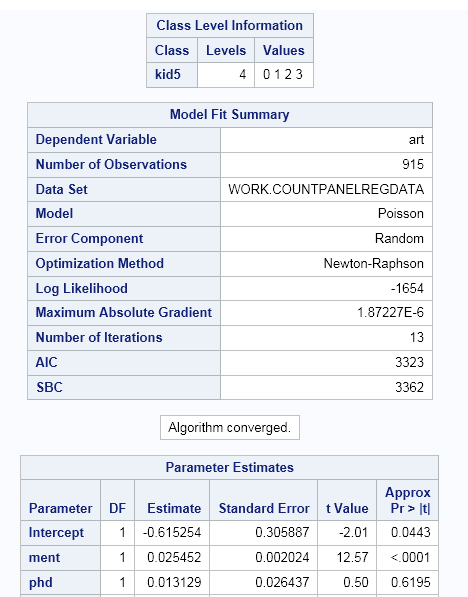Panel Data: Count Data Regression Task
About the Panel Data: Count Data Regression Task
Example: Count Data Regression with Panel Data
To create this example:
-
Create the WORK.LONG97DATA data set. For more information, see LONG97DATA Data Set.
Assigning Data to Roles
Setting Options
Copyright © SAS Institute Inc. All rights reserved.

